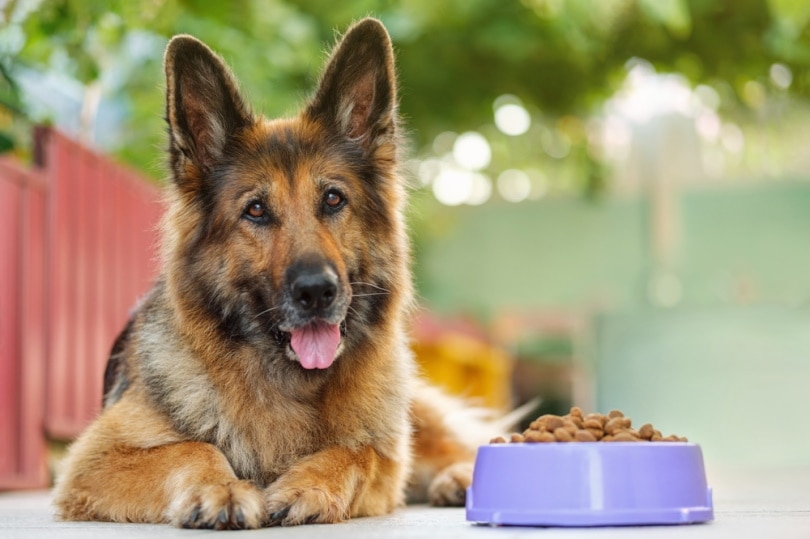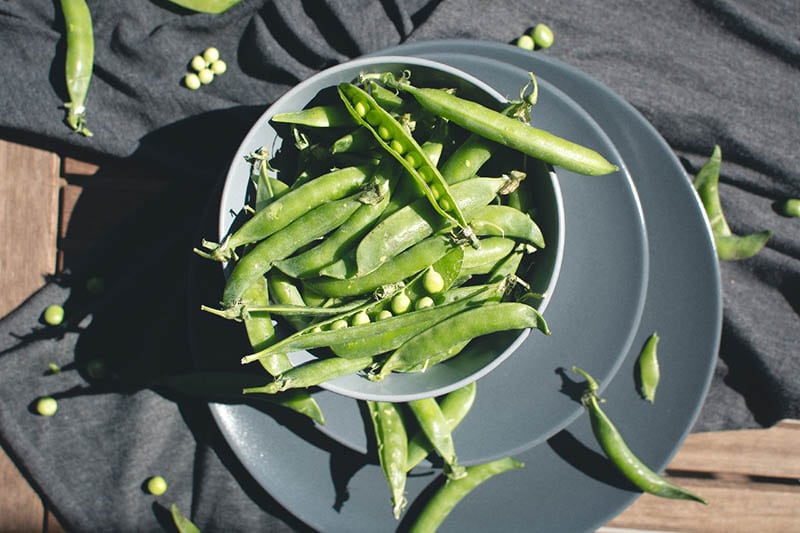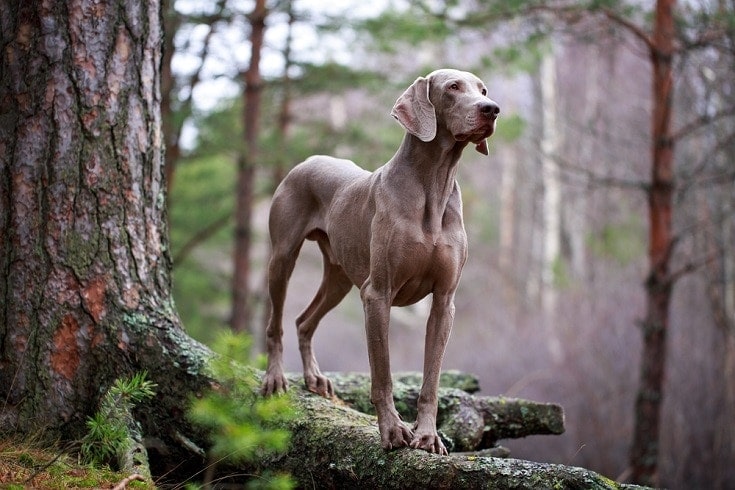Giant Schnauzer vs Doberman: How Do They Compare? (With Pictures)
Updated on
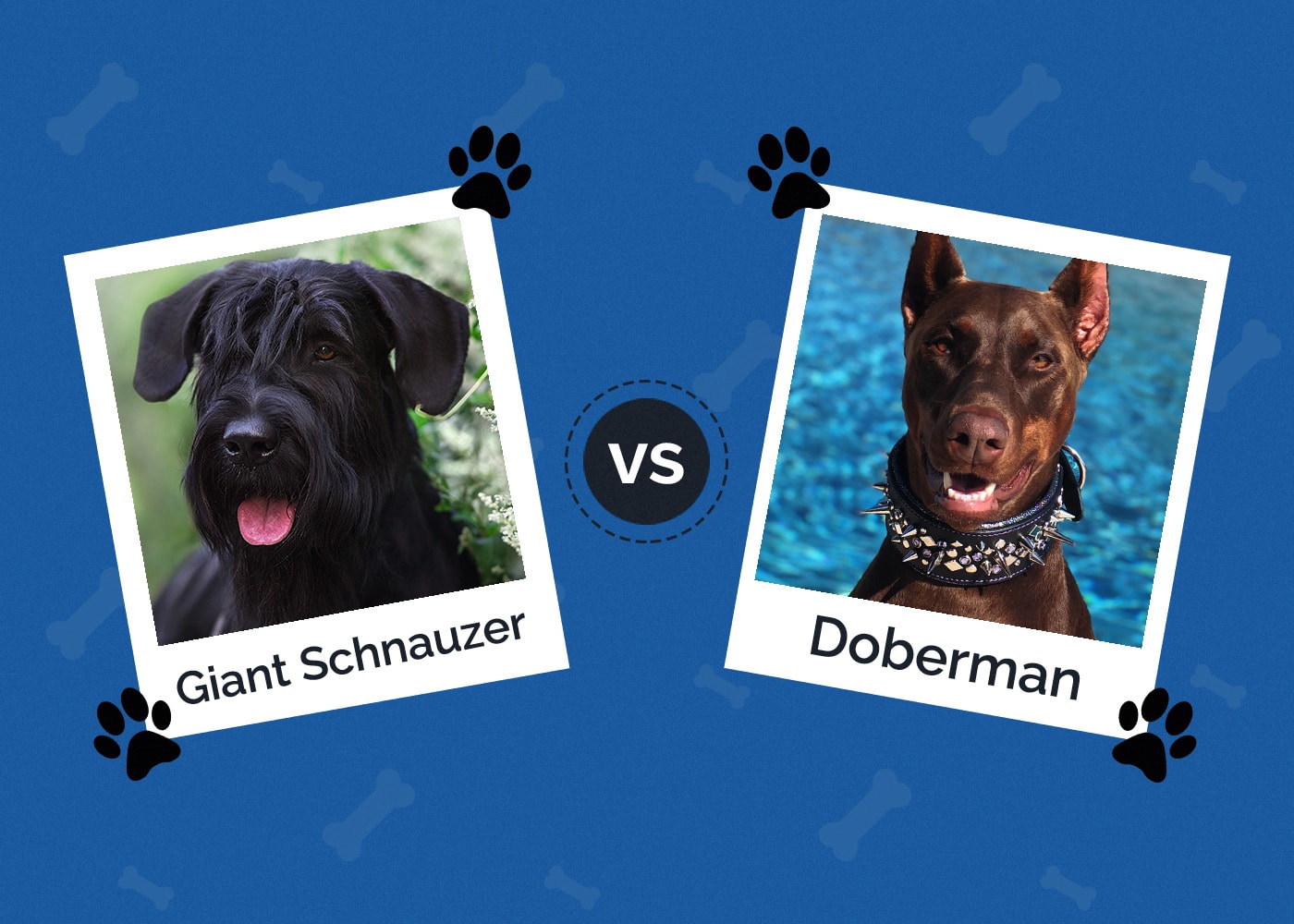
When you’re ready to bring a new dog into your family, the task of figuring out the best one can be challenging. There are many breeds to choose from, and you need to consider whether your own family and lifestyle will also be a good fit for the dog.
If you’ve narrowed your choices down to the Doberman Pinscher and the Giant Schnauzer, you have two amazing breeds to choose from.
These two breeds don’t look anything alike, but they definitely share a few traits. So, here, we go over the similarities and differences between the Doberman and Giant Schnauzer. We hope that this will give you a much better picture of the two breeds and that your next step will be bringing home a new companion!
Visual Differences
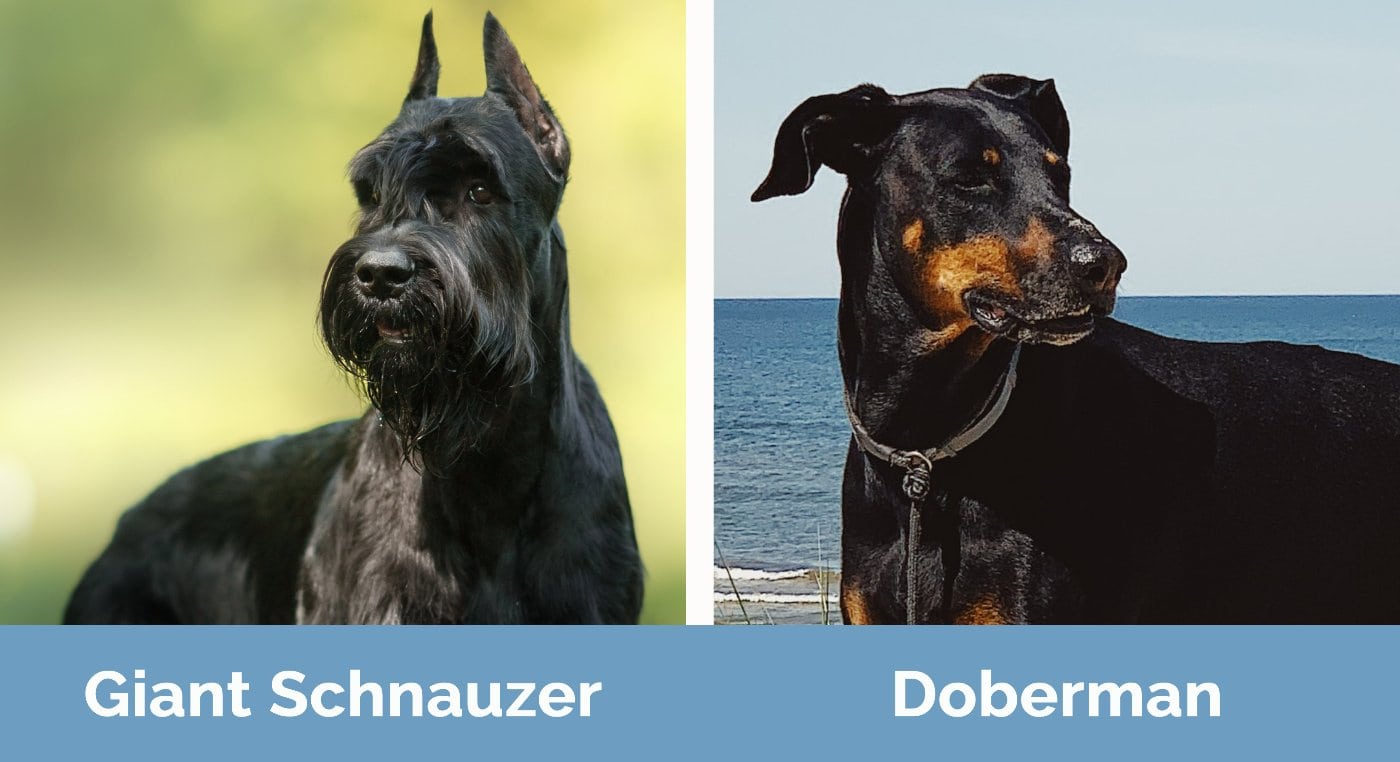
At a Glance
- Average height (adult): 23.5–27.5 inches
- Average weight (adult): 55–85 pounds
- Lifespan: 12–15 years
- Exercise: 45–60 minutes a day
- Grooming needs: Moderate
- Family-friendly: Yes
- Other pet-friendly: Okay with socialization
- Trainability: Intelligent, devoted, independent
- Average height (adult): 24–28 inches
- Average weight (adult): 60–100 pounds
- Lifespan: 10–12 years
- Exercise: 90–120 minutes a day
- Grooming needs: Easy
- Family-friendly: Yes
- Other pet-friendly: Okay with socialization
- Trainability: Intelligent, loyal, stubborn
Giant Schnauzer Overview
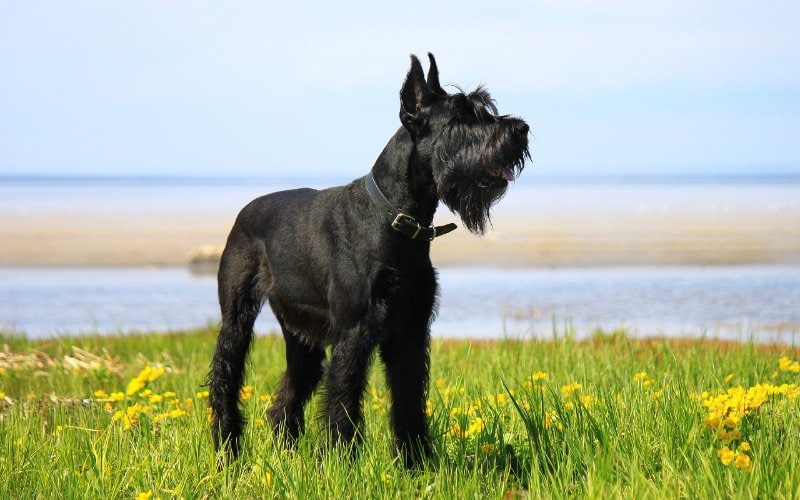
Giant Schnauzers were developed sometime in the mid-1800s in the Bavarian Alps in Germany, when the Standard Schnauzer was bred with the Great Dane. They were used to drive livestock from the farm to the market but also worked as guard dogs for farmers, innkeepers, and merchants.
Their size made them intimidating, so they were additionally used by the military and the police. Today, in addition to their working dog status, they are companions and guardians of their homes and families.
Personality / Character
Giant Schnauzers are friendly, affectionate, and devoted dogs that can be playful and love spending time with their humans.
Their work as guard and livestock dogs gave them a strong prey drive, so they can only really live with smaller animals, like cats, if they are well-socialized and raised with them.
The same can be said for other dogs. A well-trained and well-socialized Giant should get along fine with other dogs. But you’ll need to be careful around dogs of the same sex, as there can be more dominating and aggressive behavior.

Training
Training the Giant Schnauzer is both easy and challenging. On the one hand, they are highly intelligent dogs that take well to training, and their love for their people makes them eager to please.
On the other hand, they have a mind of their own and can be stubborn, so don’t be surprised halfway through a lesson that your Giant decides that they’ve had enough.
Exercise
Giants are energetic dogs that need a minimum of 1 hour of exercise every day, which should be broken up into two long walks. Due to their size and energy level, they also would do best in a home with a fenced yard.
This will enable them to run around and play. They can be happy being couch potatoes but will eagerly jump at the chance for a vigorous walk or hike.

Health & Care
Feeding the Giant Schnauzer can take up a fair bit of your budget when you consider their size! They should be fed a high-quality diet for large breeds and for their current age and activity level. Speak to your vet for recommendations of the best dog food for your dog.
Grooming the Giant Schnauzer is not for the faint of heart! They have wire-haired coats that need weekly brushing and regular stripping or clipping. You’ll either need to take your dog regularly to a groomer or learn to do it yourself.
Hand stripping the coat requires an experienced groomer. If you go the clipping route, you’ll need to trim your dog every 4 weeks during the summer to keep them comfortable.
Additionally, their beards will need extra cleaning. After every walk, you’ll want to inspect every part of them for any unwanted visitors (like ticks).
There are also inherited health conditions that all purebred dogs are prone to.
The Giant Schnauzer is a robust and healthy breed, and they might not develop any of these conditions, but some of them (especially the dangerous GDV) can be preventable with your care.
Suitable for:
Giant Schnauzers would do quite well with an active family in a large enough space, preferably with a fenced yard. They do well with children but only with solid training and socialization, likewise with pets.
If the Giant is raised with children and small pets and socialized well, they will get along fine. But Giant Schnauzers will need to be supervised at all times — young children should never be left alone with any dog.
Their owner needs to be physically active, and they aren’t a breed suitable for beginners. Giants bond strongly with their families, but you also need to be prepared for a great deal of grooming and/or potential grooming expenses. But the good news is that Giants have hair rather than fur, so they don’t shed much and are considered hypoallergenic.
Doberman Overview
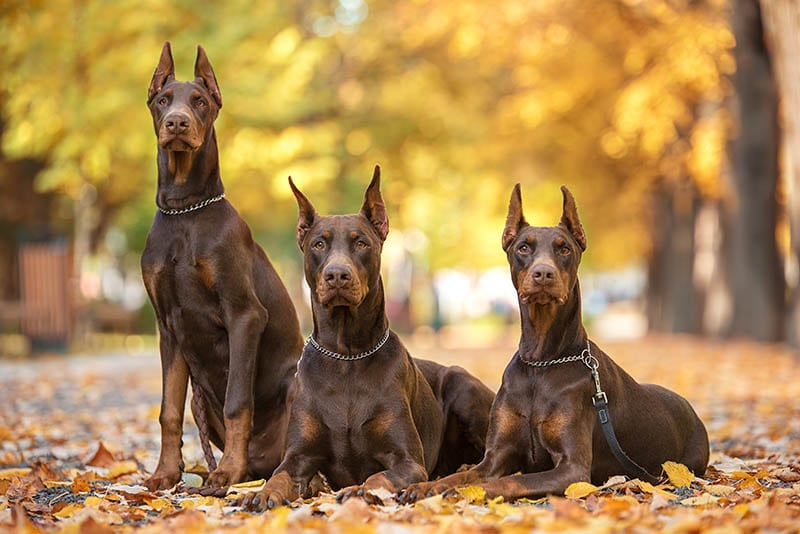
The Doberman Pinscher, or Dobie, originally came from Germany. While no one knows precisely how many breeds went into the breeding of the Dobie, they have since become a recognizable and popular breed worldwide.
They were originally bred by Louis Dobermann in the 1890s. He was a tax collector who took it upon himself to breed a dog that would accompany him on his rounds and act as his protector.
The original Doberman was bred to be the perfect guard dog, so they were aggressive. But over the years, Doberman breeders started breeding them as companion dogs, and much of the aggression was filtered out.
Personality / Character
Dobermans, like Giant Schnauzers, were bred to guard and protect. They also bond strongly with their families and fearlessly defend their territory and their humans.
Dobies are known as Velcro dogs partly due to their devotion to their family, but they also prefer to spend as much time as possible with their people.
They get along fine with dogs of the opposite sex but don’t always get along with other dogs of the same sex. Small animals like cats are okay, but only when the Doberman is well-socialized and raised with them.
Overall, they are affectionate and loving dogs. While they bond well with all family members, they tend to form a stronger bond with one person in the family.

Training
Similar to Giant Schnauzers, Dobermans can be trained easily, but there are a few challenges. Dobies are highly intelligent and have been rated the fifth smartest dog breed (after the Border Collie, Poodle, German Shepherd, and Golden Retriever). So, they learn quickly and easily and are eager to please.
But Dobies also have a stubborn streak. Training sessions will need to keep their interest; positive reinforcement, along with plenty of patience, will help.
Exercise
Like Giant Schnauzers, Dobermans are highly energetic and athletic dogs and need an owner to keep up with them. They require a minimum of 90 minutes of daily exercise, but 2 hours would be optimal.
The exercise should include playtime. Your Doberman will thrive with an owner who takes them on runs or long hikes.
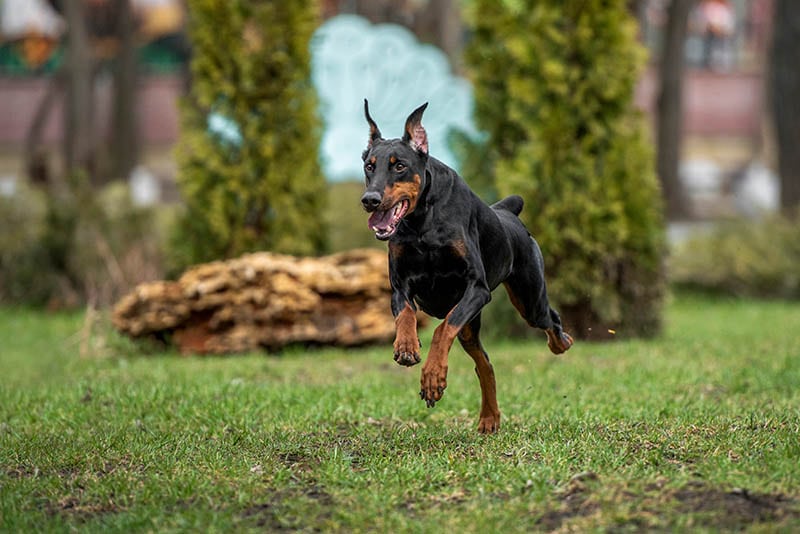
Health & Care
Dobermans will flourish with a high-quality diet for their current age and activity level. If you’re unsure what food is best for your Dobie, speak to your vet.
Grooming the Doberman is much easier than the Giant Schnauzer. Their coat is quite short and sleek and only requires a quick and easy brushing with a grooming glove. If you do this every day, you’ll notice that they don’t shed as much as many other breeds and don’t require frequent baths.
Suitable for:
Dobermans need an active family who is looking for a loving companion who can also act as a protector of family and property. You might need to sign them up for agility or obedience classes, as they do best when they have a job to do.
Their size and energy level require a home with a fenced yard. If you live in a cold climate, your Dobie will definitely need to live indoors because they are sensitive to low temperatures. Dobermans form strong bonds with their owners and might experience separation anxiety, so they would do best with someone at home most of the time.
Which Breed Is Right for You?
Giant Schnauzers and Dobermans are large dogs that require a home with a fenced yard (unless you have quick and easy access to a park) and plenty of exercise in the form of two to three long walks daily.
Both breeds need training and socialization in order to live with other pets and children, but they don’t always get along well with dogs of the same sex.
Dobermans are slightly better than Giant Schnauzers for beginner dog owners. Both train well due to their devotion and intelligence, but both can also be challenging due to having a stubborn streak.
If you prefer not spending a great deal of time on grooming, the Doberman is your best bet, but if you enjoy the bonding experience, the Giant Schnauzer will fit the bill. The Giant will also be a much better choice if you have allergies.
Overall, both dogs are relatively similar, so you can’t go wrong with either one. The sleek and athletic majesty of the Doberman and the whimsical eyebrows and beard of the Giant Schnauzer make them both gorgeous dogs. Either has the potential to be a great companion for you and your family.
Featured Image Credit: (L) Kwadrat, Shutterstock | (R) Jen B, Unsplash



